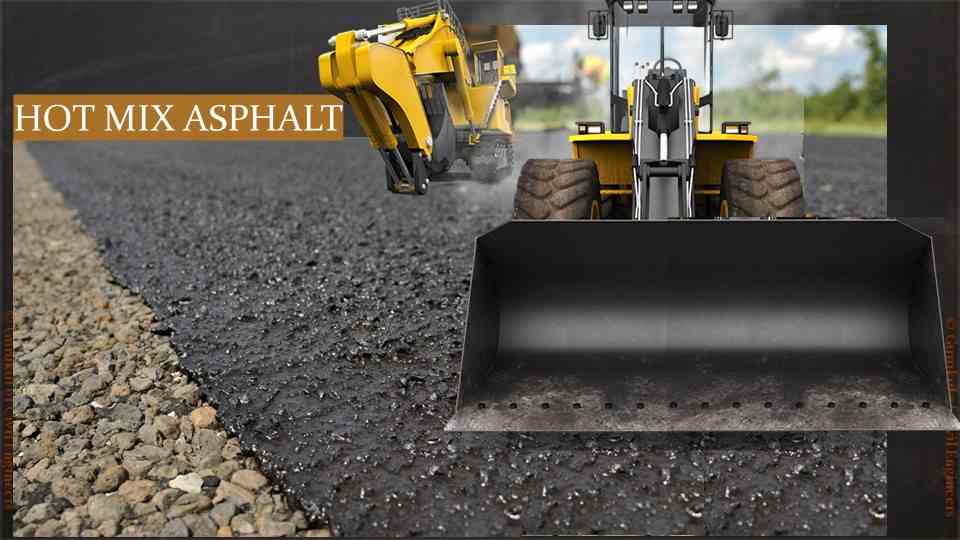Take Full Advantage Of Room Performance with Hot Mix Asphalt Angled Parking Lot Solutions
Take Full Advantage Of Room Performance with Hot Mix Asphalt Angled Parking Lot Solutions
Blog Article
Opening the Keys of Hot Mix Asphalt Modern Technology
Discovering the midsts of warm mix asphalt technology reveals a world where accurate formulations and meticulous procedures merge to shape our roads and framework. The blend of accumulations, binders, and fillers isn't simply a building task yet a critical orchestration of sturdiness and effectiveness.
Significance of Hot Mix Asphalt
Warm Mix Asphalt plays a crucial function in modern-day infrastructure development as a result of its toughness and cost-effectiveness. As the most typically made use of paving product for roadways, highways, and parking area, Hot Mix Asphalt uses a range of benefits that add to its significance in construction projects. One key advantage is its capability to stand up to rush hour lots and harsh weather, providing a reliable and resilient surface area for transportation networks. In Addition, Warm Mix Asphalt is cost-effective in both first building and lasting maintenance, making it a preferred selection for several framework projects.
The sturdiness of Warm Mix Asphalt comes from its structure, which consists of aggregates, binder, and filler materials that are meticulously chosen and mixed to fulfill certain efficiency needs. This precise combination results in a flexible and solid pavement that can withstand regular usage without substantial wear and tear. Additionally, Warm Mix Asphalt is 100% recyclable, additional boosting its sustainability and ecological benefits. On the whole, the value of Hot Mix Asphalt in facilities advancement can not be understated, as it continues to be a foundation of modern-day building and construction practices.
Components of Asphalt Mixes
The composition of asphalt mixes includes very carefully chosen aggregates, binder, and filler products that are crucial for achieving particular performance requirements. Aggregates are the primary element of asphalt mixes, providing toughness and security. These accumulations can be natural, such as crushed rock or smashed stone, or synthetic, like recycled products from old sidewalks. The binder, normally bitumen or asphalt cement, holds the accumulations together and provides flexibility and durability to the mix. The selection of the binder is vital as it straight influences the mix's efficiency in different climate condition. Fillers, such as hydrated lime or Portland cement, are made use of to boost the mix's workability and aging resistance. Angled Parking.
The mix and percentage of these elements play a considerable function in determining the top quality and efficiency of the asphalt mix. Engineers very carefully design the mix to fulfill specific requirements, taking into consideration aspects like website traffic quantity, environment problems, and sidewalk life expectancy. Correct choice and balancing of aggregates, binder, and fillers are important for creating sturdy, long-lasting asphalt pavements.
Mixing and Production Techniques

When the accumulations are chosen, the binder, usually asphalt cement, is included to bind the materials together. The binder's quality and quantity substantially impact the mix's resistance, flexibility, and toughness to ecological elements. Furthermore, fillers like hydrated lime or Rose city concrete may be incorporated to improve details characteristics of the asphalt mix, such as its workability or wetness resistance.
Throughout manufacturing, the aggregates and binder are heated, normally between 250-325 ° F(121-163 ° C ), to promote mixing and make certain proper covering of the aggregates. The mixing procedure should be comprehensive to attain a homogeneous combination that promotes the desired efficiency qualities commercial parking lot paving of the asphalt. Different strategies, such as set mixing or drum mixing, are employed to attain constant and high-quality asphalt blends for construction tasks.
Factors Affecting Asphalt Efficiency
Aspects affecting asphalt performance encompass a range of variables that impact the toughness, long life, and total quality of asphalt sidewalks. One vital factor is the high quality of materials made use of in the asphalt mix.

Style considerations, such as pavement density and water drainage, are necessary in making sure the lasting efficiency of the asphalt pavement. By thoroughly taking into consideration these elements, service providers and engineers can enhance asphalt efficiency and enhance the service life of sidewalks.
Sustainable Practices in Asphalt Technology

WMA permits for the production and positioning of asphalt blends at lower temperature levels contrasted to traditional hot-mix asphalt, resulting in minimized energy consumption and greenhouse gas exhausts. The usage of porous asphalt blends can assist minimize stormwater drainage problems by allowing water to penetrate with the pavement and into the ground, advertising all-natural water purification and recharge processes.
Final Thought
To conclude, warm mix asphalt technology plays a crucial duty in modern-day infrastructure advancement due to its longevity and cost-effectiveness. By very carefully balancing parts, utilizing appropriate mixing strategies, and considering different variables, engineers can develop top quality asphalt mixes that hold up against rush hour lots and severe weather. Accepting lasting practices, such as using warm-mix modern technologies and recycled products, even more enhances the ecological friendliness of asphalt innovation.
Mixing and production techniques in warm mix asphalt modern technology include the precise mix and processing of aggregates, binder, and fillers to produce a high-performance and sturdy asphalt mix.Variables affecting asphalt performance encompass a range of variables that impact the longevity, long life, and general top quality of asphalt sidewalks. Sustainable practices in asphalt modern technology incorporate various efforts intended at minimizing the environmental effect of asphalt production and paving processes. By including reclaimed asphalt pavement (RAP) and recycled asphalt roof shingles (RAS) into brand-new asphalt blends, the industry can substantially decrease the usage of raw products and energy, while also decreasing land fill waste.
WMA allows for the production and positioning of asphalt blends at reduced temperatures compared to conventional hot-mix asphalt, resulting in lowered energy consumption and greenhouse gas exhausts.
Report this page